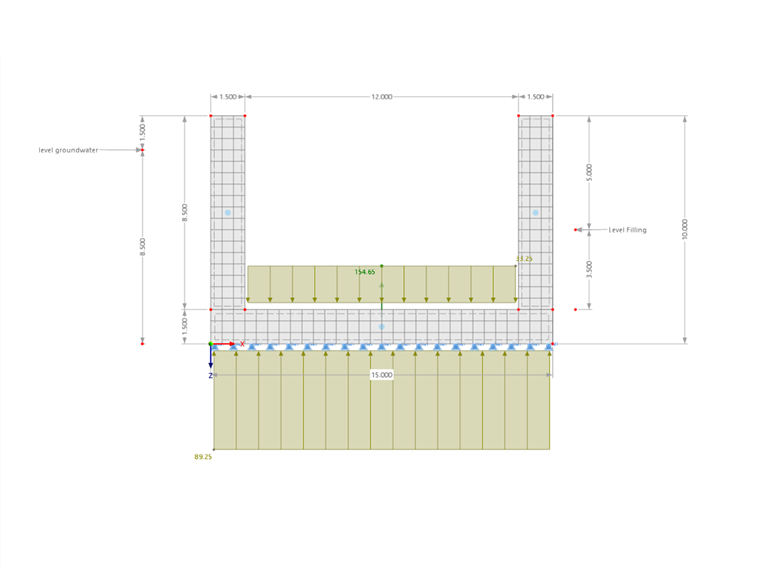The present article is about a reinforced concrete tank standing 1.5 m (4.9 ft) submerged in groundwater. Furthermore, we look at the extent to which the application of wall friction affects the design.
The model of this article is adjusted in such a way that all parameters and the geometry can be edited using the "Global Parameters". The model is then updated automatically.
First, we want to see whether the tank shown in the example is floating due to groundwater. There is water in the tank, and the wall friction is neglected. This case reflects the operating state.
Design 1
Self-Weight of Reinforced Concrete Tank
The uplift pressure at a groundwater level of about 8.5 m (27 ft) is
The water in the tank has a stabilizing effect and is added to the tank's self-weight.
Next, the limit state design against buoyancy can be summarized as follows:
The analysis has shown that the safety against buoyancy of the vessel is sufficient. A residual load-bearing capacity of 1493.4 kN/m - 1338.8 kN/m = 154.65 KN/m remains (CO3).
Design 2
The aim is to check whether the reinforced concrete tank has sufficient safety against buoyancy when it is pumped empty. In this design check, the wall friction is to be used.
Layer 1
SU, γ = 17 kN/m³, φ´= 30°
Layer 2
SU, γ`= 9 kN/m³, φ´= 30°
Layer 3
GW, γ´ = 12 kN/m³, φ´= 32,5°
The distribution of the horizontal earth pressure is composed as follows:
α= 0; β= 0; δ= 2/3*φk; kah,SU= 0,28; kah,GW= 0,25
For each of the wall surfaces, the resulting shear force to be applied is:
To simplify, the load is applied as a line load at the top edge of the container as a line load in Load Case 4.
Thus, it is possible to determine the uplift limit state of the vessel (CO5):
As expected, Load Combination 5 also becomes unstable in RFEM 6. Consequently, safety against buoyancy is not given in this case.


